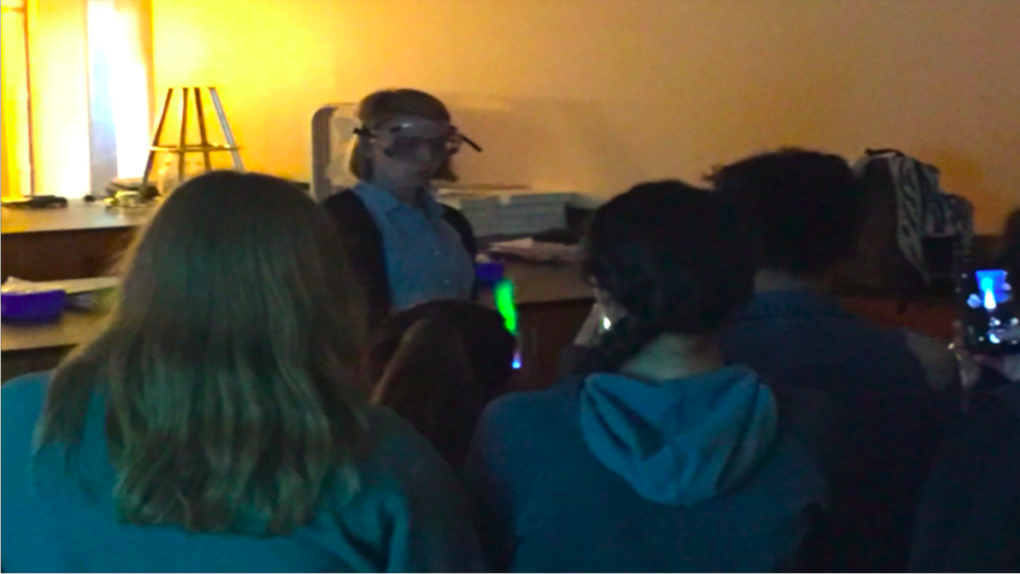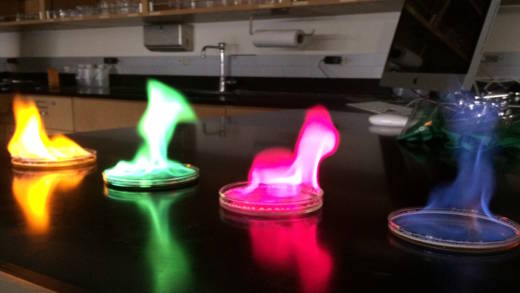She did this by first encouraging her students to gather around as she lit the Bunsen burner, waiting for the inevitable poof from the match. Then, as she explained the chemicals and what she was about to do, she commented, “Get ready with those phones, everybody. This is gonna be Snapchat worthy!”
Students quickly took out their phones and waited for the moment. As she struck the match and lit the fluid, a whitish cloud arose from the beaker causing students to “ohhh,” “ahhh,” and snap.
“Very cool!” said one student. “Can you do that again?”
“Wait, I wanna post it!” another student added.
She proceeded to do the demonstration two more times. The second time, she explained the steps in far greater detail, sharing the whys and hows of the chemical reactions. Students listened, nodded and were eager to see the demonstration again.
As the teacher set up to do the demonstration a final time, she encouraged students to get their phones ready once again. Students felt empowered and innovative as they prepared to snap.
Adding to their excitement may have been the fact that our school does not allow phone use unless approved by the teacher, making Snapchatting in the classroom a special treat. In addition, social media is especially frowned upon, unless once again, authorized by the classroom teacher. As you can imagine, not many teachers allow social media opportunities in their classrooms.
But that day, the use of social media proved to be integral in helping to create the classroom community. As students watched each demonstration, they believed they, too, could create experiments of interest and importance. They asked questions — why did the mixed chemicals create that color? Why did they create that sound? What happens if you add more of this chemical or that chemical?
[media-credit id=11486 align="aligncenter" width="640"] [/media-credit]
[/media-credit]
What might have been the routine chemistry demonstration turned into something much more engaging. The students’ initial expectations of boring, stupid, or dull Chemistry classroom lessons were quickly changed as they took their Snapchat photos. In contrast, the questions they asked showed their curiosity and wonder — two vital characteristics of every scientist.
Giving students the permission to record the moment and snap it meant that the lesson was meant to be shared; that it was interesting and stimulating enough to be shared. The snapping created an action for the students and made them more engaged because they felt like they were participating.
After the lesson, I shared my enthusiasm with the teacher about her use of Snapchat. She smiled and said, “Students really like taking pictures and posting them about the experiments and demonstrations we do in class. I always tell them to take pictures of the demos and never of other students. I want students to know that our work is important enough and serious enough to be posted.”
“After all,” she continued, “by posting our Chemistry experiments and demonstrations, students are telling me they like what we’re doing and want to share it with others, even if it is just a simple chem experiment.”
And yet, we know there is nothing simple about engagement or building a sense of community. The teacher had created an environment where students were encouraged, even empowered to share their learning in a format most comfortable for them. How “very cool” is that?

 [/media-credit]
[/media-credit]